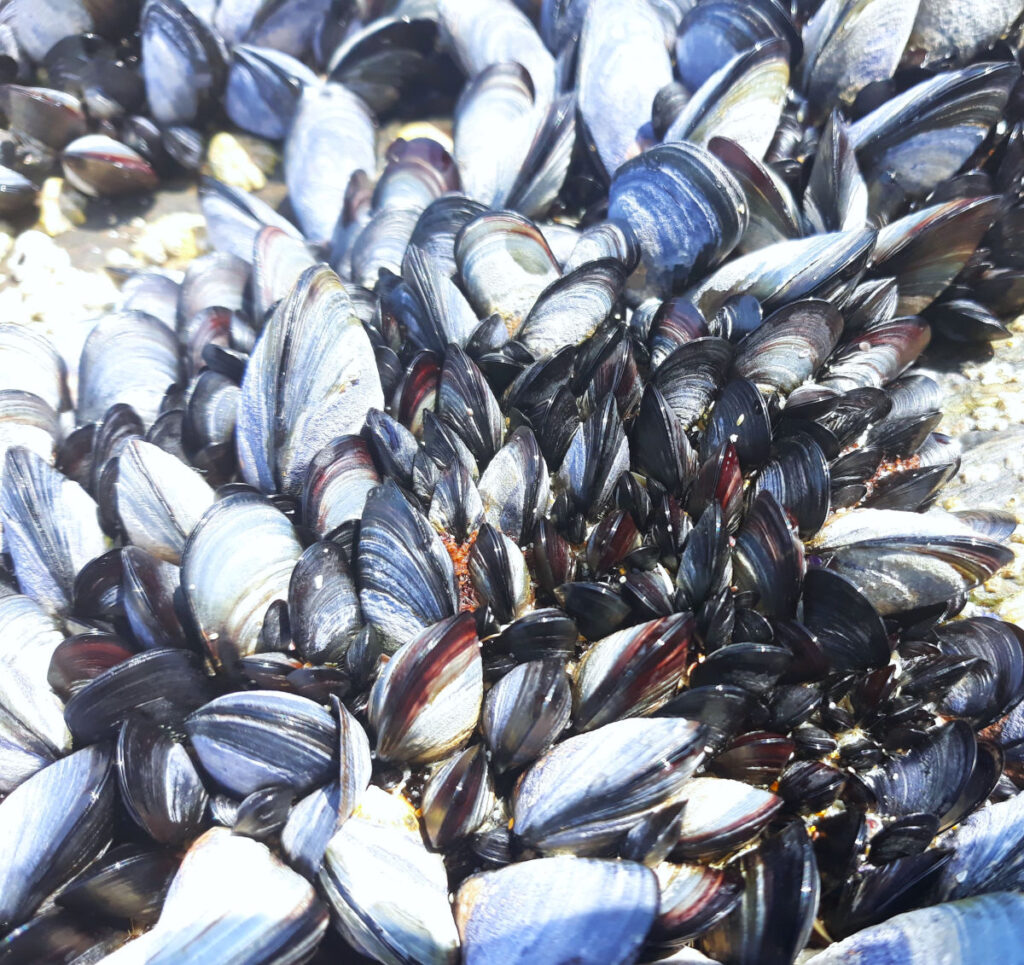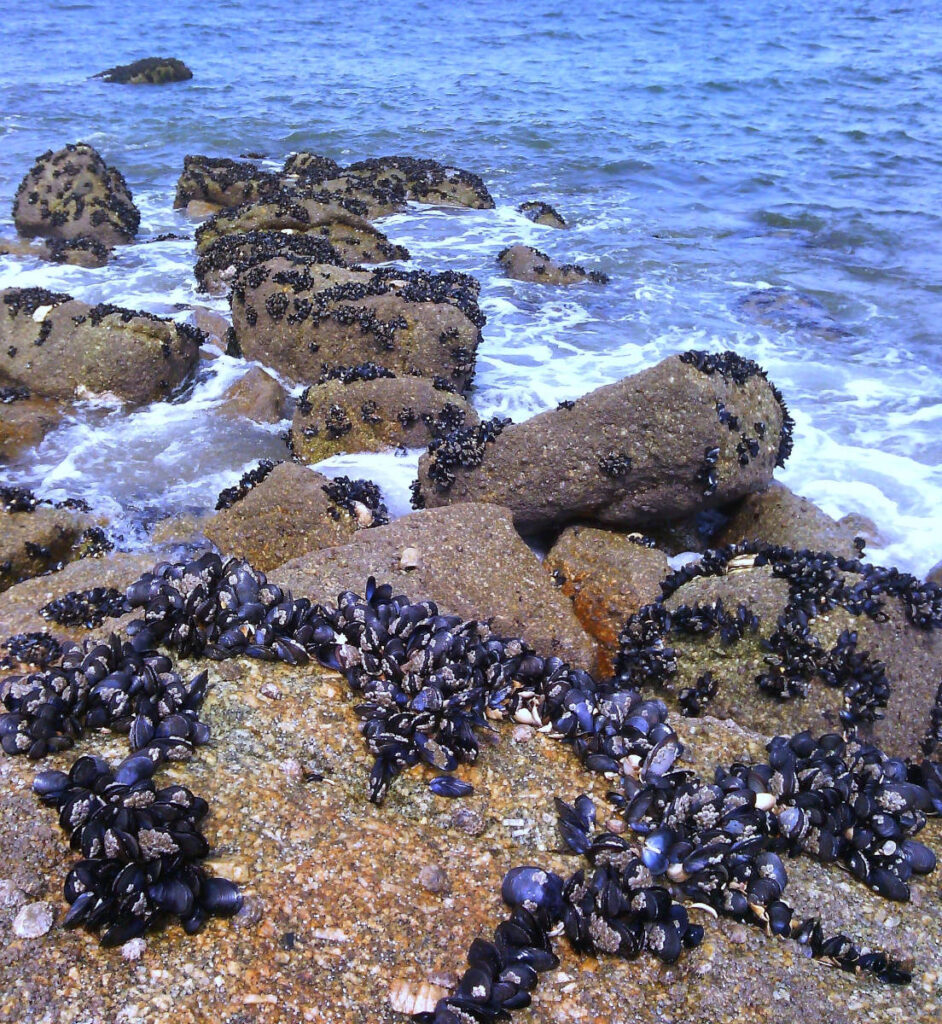Erika Burioli: Mysterious transmissible cancers in mussels
Erika Burioli works on cancer cells capable of spreading in the environment and infecting foreign organisms. The researcher at the Interactions Hôtes-Pathogènes-Environnements (IHPE) laboratory has been awarded a european research council (ERC) grant in September 2023 to continue her work on bivalves.

Studying a transmissible disease in a mussel could be a source of derision for those in the wrong frame of mind. Erika Burioli, on the other hand, takes her subject very seriously. And with good reason. Transmissible cancers in bivalves open up promising avenues for understanding cancer cells. So promising, in fact, that the researcher from the Interactions Hôtes-Pathogènes-Environnements(IHPE) laboratory has been awarded an ERC grant worth 1.5 million in September 2023. " Transmissible cancers are astonishing biological entities. The cells involved are capable of breaking through the host's barriers to spread from one animal to another, playing tricks on its immune system," explains Erika Burioli, who studies these cancers in bivalves.
Transmissible cancers also exist - albeit very rarely - in mammals. " We know about devil facial tumor, which has caused a massive decline in Tasmanian devil populations over the last fifty years, and, in dogs, canine transmissible venereal tumor. The latter, which appeared over 4,000 years ago, is now widespread throughout the world ", explains the biologist. This longevity of transmissible cancer cell lines remains a mystery. With no known sexual reproduction, these cells multiply by clonal reproduction, which should progressively accumulate deleterious mutations and lead to the extinction of these lines.
The hypothesis - the subject of the Hypercan project for which Erika Burioli has received ERC funding - is that the persistence of lineages is favored by hyperploidization mechanisms in cancer cells, i.e. cells with several extra chromosomes compared to a normal diploid cell. Up to 10 times more DNA copies! " A wealth of DNA copies that would limit the effect of deleterious mutations and generate genetic diversity ", explains the researcher.
By chance
It was only in 2015 that the first transmissible cancer in bivalves was discovered by American researcher Michael Metzger of Seattle's Pacific Northwest Institute(La transmission de cancers chez les créatures marines préoccupe les scientifiques, Geo, 2019/11). Since then, seven other transmissible cancer lineages have been identified in bivalves, including those infecting marine mussels of the genus Mytilus, which Erika Burioli found by chance while working on farm diseases. Burioli began her scientific career at Bologna University's Faculty of Veterinary Medicine, where she wrote her thesis on epidemics in oyster farms.
Applied research that she pursued as a post-doctorate at the Labeo laboratory in Caen in 2017, where one day a mussel farmer brought her samples from his decimated farm. After studying them closely, she diagnoses the presence of a cancer, a kind of leukemia, with the characteristics of an infectious disease since several samples and farming areas are affected. Through collaboration with Nicolas Bierne fromIsem and Michael Metzger, and genetic analyses, she demonstrated the transmissibility of this cancerous lineage in mussels. In 2019, the post-doc will join the IHPE laboratory in Montpellier for the ANR Transcan project, to study the phenotypic characteristics and epidemiology of these cancers.
The study of these cancerous cell lines is full of surprises. Firstly, their ability to survive: they stay alive for more than three days in seawater, which is a long time for an isolated cell. This resistance allows the propagation of lines present from South America to the Far East. Then there's their high rate of proliferation, " which is closer to that of a micro-parasite than to that of known tumors ", points out the scientist. These cancer cells are also capable of manipulating their host, since they have a castrating effect in the infected organism, from the earliest stages of infection, " presumably to recover maximum resources for proliferation, resources which would otherwise be allocated to reproduction ", says Erika Burioli.
Cell-cell fusion
" What intrigues me today are the evolutionary mechanisms occurring in these lineages, capable of persisting so long in host populations ". Thanks to Muse "Tremplin ERC" funding, which enabled her to work with a Master's student, she has shown that these cells have a strong propensity for cell-cell fusion, which partly explains the hyperploidy. This discovery is important because it is also of interest to human cancer research, not least because many tumors are also hyperploid. This phenomenon remains difficult to study in humans. " In transmissible mussel cancer, it will be easier to shed light on the mechanisms that lead to hyperploidy, to follow the evolution of the genome and thus to understand the evolutionary mechanisms at play. This is a very promising model for studying the evolution of cancers ", explains the woman who is about to launch her project.
With the ERC funding, Erika Burioli will not only build up her team by recruiting an engineering assistant, two post-docs and a PhD student, but also devote time to nurturing national and international collaborations. " I'll be continuing to work with Nicolas Bierne and Michael Metzger, as well as with Elizabeth Murchison from Cambridge University, who is studying transmissible cancer in dogs and Tasmanian devils ", emphasizes Erika Burioli, who has gradually moved away from applied research to immerse herself in fundamental research, which undoubtedly holds many mysteries.


